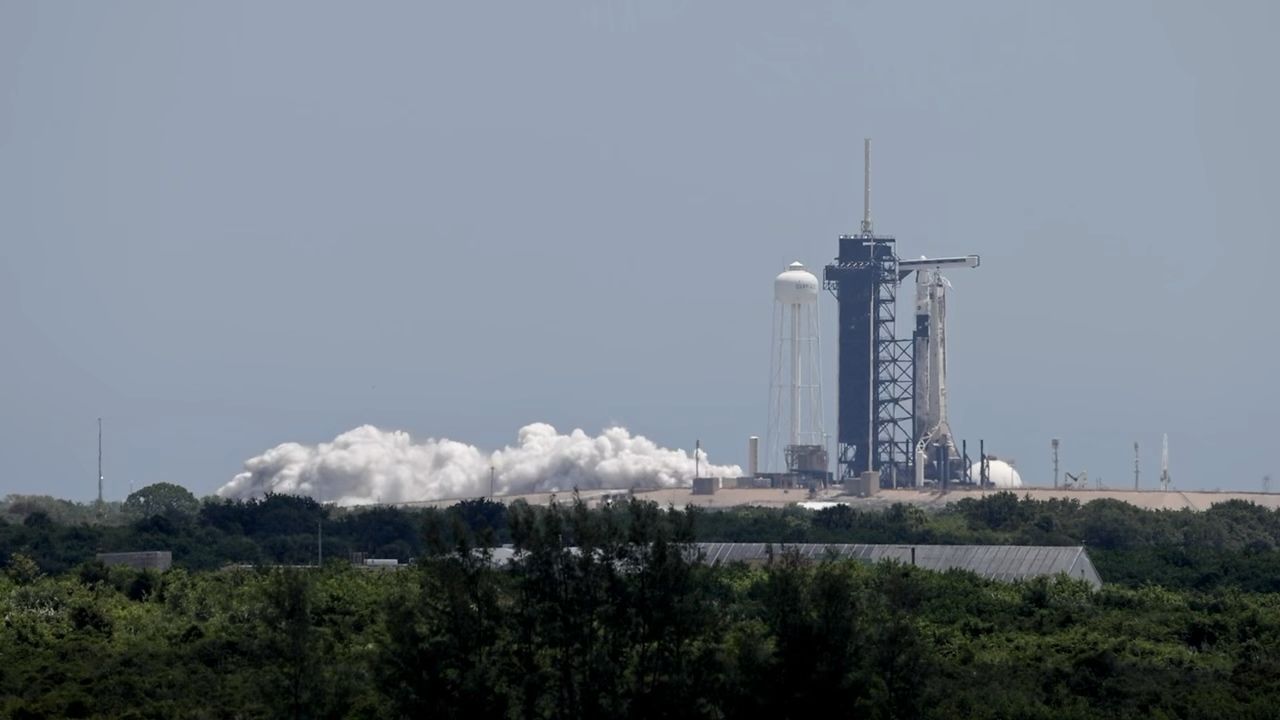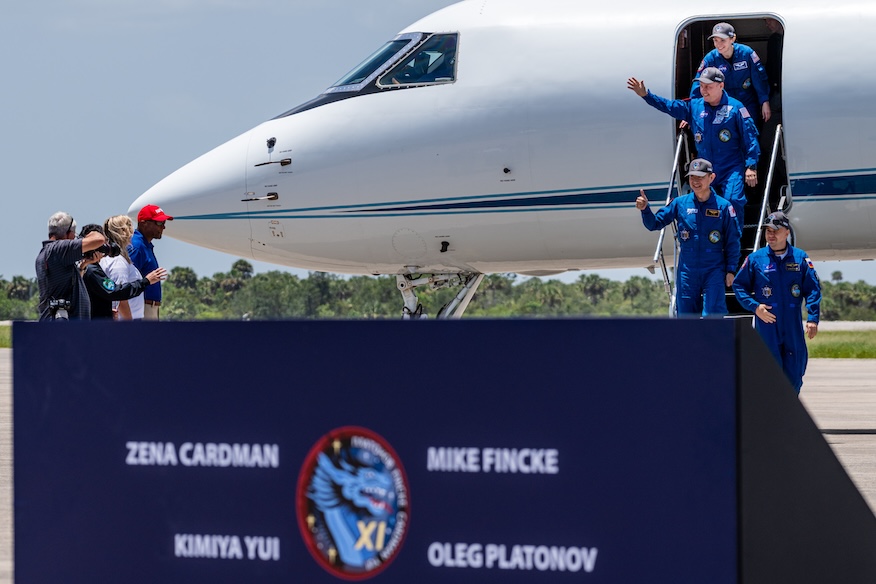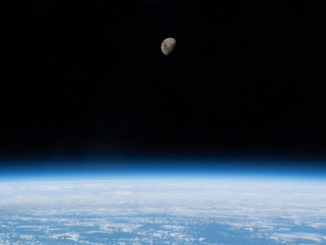
Update July 28, 7:14 p.m. EDT: Added NASA comment regarding aborted static fire.
Update July 29, 1 p.m. EDT: Static fire was completed.
The nine Merlin engines that power SpaceX’s Falcon 9 rocket roared to life for about 10 seconds on Tuesday afternoon at NASA’s Kennedy Space Center. With the hold down clamps at Launch Complex 39A keeping the rocket in place, the launch vehicle appeared to perform a good static fire test, pending review.
The mid-afternoon rocket engine firing was designed to verify the health of the Falcon 9 rocket that will carry four humans up to the International Space Station this week. The three astronauts and one cosmonaut of the mission, dubbed Crew-11, will carry out a long-duration stay onboard the orbiting outpost with liftoff planned for Thursday, July 31.
Tuesday’s test came after an indicator issue prevented the 70-meter-tall rocket from beginning the burn at 3:09 p.m. EDT (1909 UTC) on Monday. NASA issued a statement describing the issue on social media about 3.5 hours later and announced that teams would try again on Tuesday, July 29.
“Monday’s test auto-aborted at T-57 seconds due to an error with the transporter erector’s cradle arm position indication,” NASA wrote. “The arm functioned correctly and teams are reviewing data. Falcon 9 and Dragon remain healthy on the pad ahead of Thursday, July 31’s targeted launch, pending static fire and launch readiness.”
Monday’s static fire attempt came three hours after the conclusion of a dry dress rehearsal in which the astronauts board the Dragon with the Falcon 9 un-fueled.
SpaceX is using Falcon 9 first stage booster serial number B1094 for the Crew-11 mission. The rocket is flying for a third time, having previously launched Starlink 12-10 on April 29 followed by Axiom Mission 4 on June 25.
The booster is no stranger to anomalies during a prelaunch campaign. Ahead of the Ax-4 mission, the booster also experienced a liquid oxygen leak that became apparent during the static fire test. SpaceX officials said this stemmed from a leak that sprung up during the booster’s landing on a droneship amid the Starlink 10-12 mission in late April.
Prior to the launch of that private astronaut mission, William Gerstenmaier, the vice president of Build and Flight Reliability for SpaceX, said that the leak was being addressed at the pad. He said that teams installed a nitrogen purge to mitigate the leak and also addressed a thrust vector control problem that arose as well.
The fully integrated rocket rolled out of the hangar at LC-39A around midnight heading into Sunday morning. The rocket was brought into the launch position shortly before 10 a.m. EDT (1400 UTC) Sunday and the crew access arm swung out to position itself alongside the Crew Dragon Endeavour.
Timelapse of Dragon and Falcon 9 going vertical at pad 39A pic.twitter.com/OjSiqO1yya
— SpaceX (@SpaceX) July 27, 2025
Mission commander and NASA astronaut Zena Cardman and her three crew mates arrived at KSC on Saturday afternoon in the midst of their planned quarantine period, which is standard for missions to the ISS. She and Oleg Platonov, a Roscosmos cosmonaut and one of two mission specialists, will be flying to space for the first time.
NASA astronaut and pilot Mike Fincke is returning to space for a fourth time. Japanese Aerospace Exploration Agency (JAXA) astronaut and mission specialist Kimiya Yui is making his second trip to the ISS.
The crew will live and work onboard the station for at least six months. NASA and its international partners are considering extending the nominal mission to eight months to more closely align with the shifting timelines being put in place by Russia with its Soyuz missions.
A final decision on the mission length isn’t expected until about a month or so after Crew-11 docks with the ISS.




